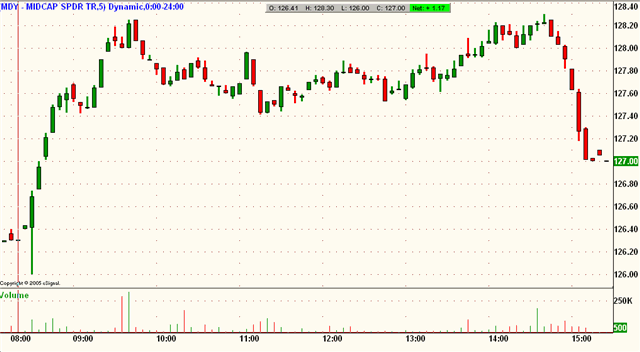Here’s how to boost your trading results
Trader Performance and Market Vision
One of the most significant impediments to trader performance that I’ve
noticed in my work with electronic futures traders is their tendency to assume
that their market is the market. Focusing on price action
and volume in their particular instrument only, they lose market vision.
Like a tunnel-vision quarterback, they fail to see the entire field.
Why is this important?
My research suggests that breakout moves–price movements out of an
established range–are more likely to continue their breakout direction if the
broad market participates than if the move is limited to a particular segment of
the market. This is especially true if the breakout move is dominated by a
relative handful of large capitalization issues that are highly weighted in the
popular Dow and S&P 500 averages, but does not include the multitude of
lesser-known small and Mid-cap issues.
Rising tides are supposed to lift all boats…and when the boats don’t rise,
it makes you question whether you’re truly at high tide.
Let’s take Monday afternoon’s trading as an example. We can see a nice
upside breakout move in the ES futures after a strong morning trade. What
happened after the breakout was not so nice for the bulls.

Now let’s look at the Russell 2000 (small cap) futures over the same
period. Notice how we barely eked out daily highs in the afternoon.

The same is true of the S&P Mid-cap issues:

In fact, NYSE advancing issues at 9:30 AM CT were 1833, but only
1795 at 14:40 PM. NASDAQ advancers were 1414 at 9:30 AM and just 1358 at
14:40 PM. The rising tide was not lifting all boats and, sure enough, the
tide came in.
It doesn’t matter what stock index you trade: Your market is not
the market. Mean reversion–returns to the daily value
area–is more likely to follow breakouts when a majority of issues are not
participating in the moves. Like quarterbacks, traders need to see and
read the whole field or they’re likely to get sacked.
Brett N. Steenbarger, Ph.D. is Associate Clinical
Professor of Psychiatry and Behavioral Sciences at SUNY Upstate Medical
University in Syracuse, NY and author of The
Psychology of Trading (Wiley, 2003). As Director of Trader Development
for Kingstree Trading, LLC in Chicago, he has mentored numerous professional
traders and coordinated a training program for traders. An active trader of the
stock indexes, Brett utilizes statistically-based pattern recognition for
intraday trading. Brett does not offer commercial services to traders, but
maintains an archive of articles and a trading blog at www.brettsteenbarger.com.
